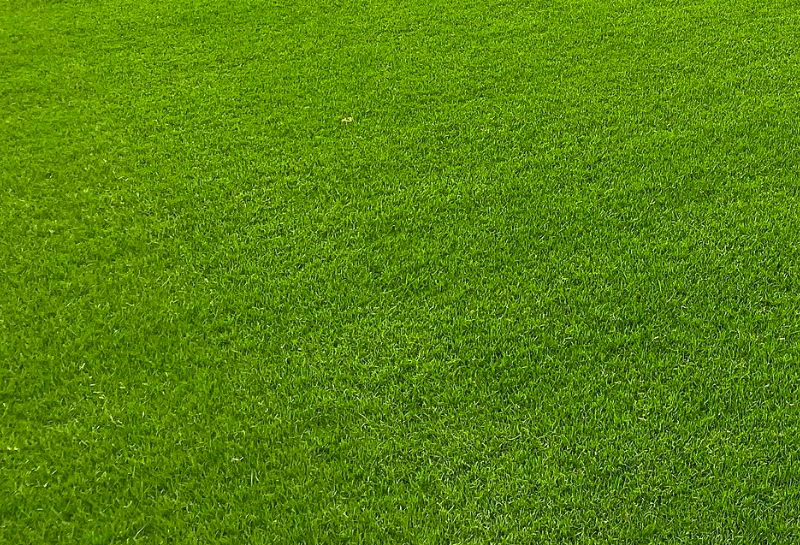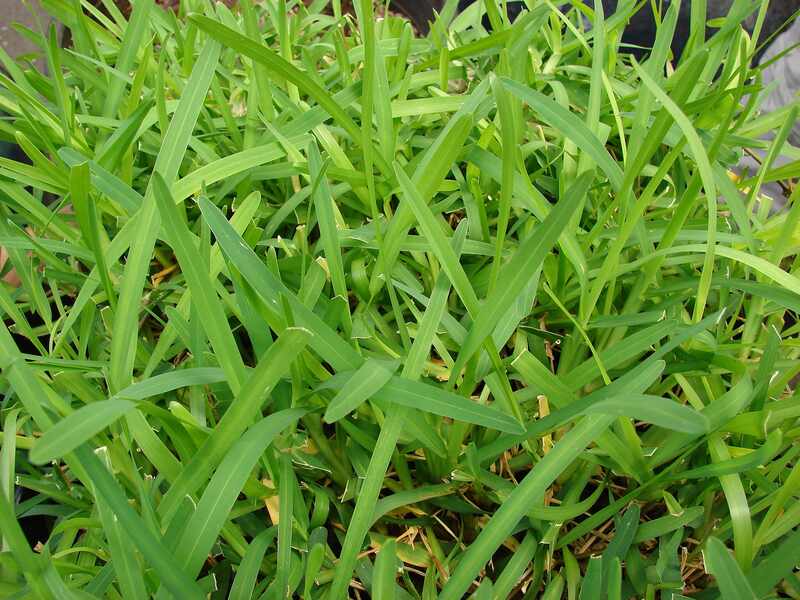
Growing a lush, green lawn in the Bear State is easier said than done. Discover the best grass seed for Arkansas lawns, along with tips to amp up your grass game. Uncover top choices that thrive in the transition zone, so you can create a thriving, durable landscape.
Warm-season vs. cool-season grasses for Arkansas
Arkansas sits in the transition zone, a region ranging from East Coast states all the way west to Missouri, Kansas, Eastern Oklahoma, and Arkansas. Neither warm nor cool-season turfgrasses completely adapt to the region. Arkansas summers are too hot for cool-season grass varieties and winters are too cold for warm-season grasses.
- Warm-season grasses perform best in the southern half of the United States. They grow most actively in the late spring and summer when temperatures are around 75 to 95 degrees Fahrenheit.
- Cool-season grasses are well-suited to northern climates with cold winters and distinct seasons. They grow most actively in the early spring and fall when temperatures are around 55 to 75 degrees Fahrenheit.
Arkansas lies south of its transition zone neighbor, Missouri. Cool-season grass varieties grow best in Northern and Central Arkansas, while the entire state is suited to growing most warm-season cultivars.
Best warm-season grasses for Arkansas
Warm-season grasses grow best in the summer when temperatures are between 75 and 95 degrees Fahrenheit. They green up slowly in the spring and go dormant in cold weather. Warm-season grasses turn brown after temperatures drop below freezing. Discover four warm-season grass types for Arkansas lawns:
Bermudagrass

Bermudagrass is commonly used on golf courses and in parks. It is also one of the most popular grass types in Arkansas. Bermudagrass is a great choice for lawns with a lot of foot traffic because it recovers quickly. It is also heat- and drought-tolerant but loses its attractive green color when it gets too much shade.
Common Bermudagrass goes dormant in the cold Arkansas winters. However, there are cold-hardy varieties available, like Yukon and Quickstand. Bermudagrass has better winter hardiness than other warm-season grasses.
Bermudagrass is high-maintenance and fast-growing. It requires frequent mowing and needs regular fertilization. It also accumulates thatch easily, so homeowners should be prepared to dethatch your lawn regularly. Bermudagrass is also very aggressive and can take over surrounding areas, like flowerbeds and sidewalks.
- Classification: Warm-season grass
- Spreads by: Stolons and rhizomes
- Shade tolerance: Low; thrives in full sun
- Drought tolerance: High
- Foot traffic tolerance: High
- Soil pH: 6-6.5
- Soil type: Tolerates most soil types
- Maintenance needs: Needs frequent mowing due to fast growth rate; develops thatch easily; needs regular fertilization
- Mowing height: 1-2 inches
- Potential for disease: Good disease resistance; can develop spring dead spot, root decline, dollar spot, leaf spot, large patch, and sheath spot
- Other notes: Good tolerance to salt; often grown in coastal areas
Grass Seed Options:
– Pennington Bermudagrass Bare Spot (5 lb. bag)
– Pennington Smart Seed Bermudagrass Mix (8.75-lb. bag)
– Scotts Turf Builder Bermudagrass (10-lb. bag)
– Hancock Seed Co. Bermudagrass (50-lb. bag)
Zoysiagrass

Zoysiagrass has similar qualities to Bermudagrass. However, Zoysiagrass comes with less maintenance. It’s a slow-growing grass, so it needs less mowing. Zoysiagrass is as drought-tolerant as Bermudagrass and typically performs better in the winter.
Like Bermudagrass, Zoysiagrass is also used statewide. The two Zoysia varieties found in Arkansas are Zoysia japonica and Zoysia matrella. Zoysiagrass grows best in full sun but tolerates partial shade. It adapts to multiple soil types and has high traffic tolerance.
Although this grass requires less maintenance, homeowners still need to fertilize, water, and mow to prevent common Zoysiagrass pests and reduce pesticide use. You should also avoid over-fertilization to decrease excessive thatch.
- Classification: Warm-season grass
- Spreads by: Stolons and rhizomes
- Shade tolerance: Moderate
- Drought tolerance: Moderate to High
- Foot traffic tolerance: High; recovers slowly
- Soil pH: 6-6.5
- Soil type: Well-draining; some cultivars are more tolerant of a wide range of soils than others
- Maintenance needs: Moderate; low nitrogen fertilization requirements; prone to thatch
- Mowing height: 1-2.5 inches
- Potential for disease: Good disease tolerance; can develop large patch, root decline, spring dead spot, rust, curvularia, and leaf spot
- Other notes: Moderately salt tolerant; mow at a taller height if the grass is growing in partial shade
Grass Plug and Seed Options:
– Zenith Zoysia Grass Seeds (1/8 lb. of seeds)
Centipedegrass

Centipedegrass is slow-growing and low-growing, making it a low-maintenance option that requires less fertilizer and mowing. It also has high insect and disease resistance and adapts to infertile soil.
Centipedegrass takes longer to establish than other warm-season grasses. It also has lower drought tolerance. Too much phosphorus and nitrogen will damage centipedegrass, so be careful not to over-fertilize. Centipedegrass grows as far north as Little Rock, but it is better adapted to southern parts of the Bear State.
- Classification: Warm-season grass
- Spreads by: Stolons
- Shade tolerance: Moderate–at least six hours of full sun per day
- Drought resistance: Low to moderate
- Foot traffic tolerance: Low
- Soil pH: 5-6
- Soil type: Acidic, infertile, at least moderately good drainage (very dense, clay soils produce poor results)
- Maintenance needs: Low mowing frequency
- Mowing height: 1.5-2 inches
- Potential for disease: Moderate; prone to centipedegrass decline and iron chlorosis
- Other notes: Low maintenance once established; greenish-yellow color (like a green apple) during the growing season; low fertilizer and mowing requirements; not a salt-tolerant grass
Grass Seed Options:
– Gulf Kist Coated Centipedegrass Seeds (1 lb.)
– Scotts EZ Seed Patch and Repair Centipedegrass (3.75 lbs.)
– TifBlair Centipedegrass (5-lb. bag)
– Pennington Centipedegrass and Mulch (5-lb. bag)
St. Augustinegrass

St. Augustinegrass has similar characteristics to centipedegrass. They both have flat, large blades with a coarse texture. The Northern Arkansas winters are a little too much for St. Augustinegrass, and this grass type grows best in the Central and Southern parts of the state.
St. Augustinegrass has high heat tolerance. It is the most shade-tolerant warm-season grass. It is also fast-growing and high-maintenance, requiring frequent mowing, dethatching, and fertilizing.
- Classification: Warm-season grass
- Spreads by: Stolons
- Shade tolerance: Moderate shade tolerance, among the highest of any warm-season grass; some cultivars are more shade tolerant than others
- Drought resistance: Moderate
- Foot traffic tolerance: Moderate
- Soil pH: 6-7.5
- Soil type: Tolerates many soil types; prefers moderately fertile and moist (not waterlogged) soils; not a highly drought-tolerant grass; doesn’t tolerate soil compaction
- Maintenance needs: Moderate to high mowing frequency
- Mowing height: 2.5-4 inches (mow dwarf varieties from 2.5-3 inches; standard cultivars from 3-4 inches; mow tall in shade)
- Potential for disease: Moderate to high; prone to gray leaf spot, large patch, and take-all root rot
- Other notes: Native to coastal areas across the world and prefers moist soils and mild winters; will thrive in more inland areas provided growing conditions are met; good salt tolerance; will go dormant during winter in all but the southernmost regions
Grass Plug Options:
– Seed Ranch St Augustine Seville Grass Plugs (2 Trays)
– Seed Ranch St Augustine Floratam Grass Plugs (2 Trays)
Best cool-season grasses for Arkansas
Cool-season grass grows best when temperatures are between 55 to 75 degrees Fahrenheit. They are less active in the summer and go dormant in freezing temperatures. However, cool-season varieties go dormant later in the season than warm-season grasses.
There is only one cool-season grass recommended for Arkansas lawns, and it grows best in the upper one-third of the state.
Tall fescue

Tall fescue is the most heat- and drought-resistant cool-season grass, and it withstands Arkansas summers better than other cool-season varieties. Tall fescue is best suited to the northern one-third of the Natural State.
Tall fescue is less aggressive than many warm-season grass types. It is also adaptable and does not have significant problems with thatch or diseases. It also has excellent winter hardiness.
Tall fescue is not a good option to fill bare spots because of its bunch-type growth habit. Overseed tall fescue with perennial ryegrass every one to three years to maintain a dense lawn. Tall fescue requires frequent watering in the summer.
- Classification: Cool-season grass
- Spreads by: Bunch-type grass
- Shade tolerance: Moderate
- Drought tolerance: Moderate
- Foot traffic tolerance: Moderate; recovers poorly
- Soil pH: 5.5-6.5
- Soil type: Fertile; good drainage; adaptable
- Maintenance needs: Frequent mowing; does not produce significant thatch
- Mowing height: 2-4 inches
- Potential for disease: Low to moderate; prone to brown patch, seedling disease, and leaf spot
- Other notes: Reseed periodically to repair thinning patches or bare spots; look for newer “turf-type” tall fescue (TTTF) cultivars; seed blends with more than one TTTF type offer the best chance for a strong lawn
Grass Seed Options:
– Triple-Play Tall Fescue Grass Seed Blend (5000 sq ft)
– Eretz Kentucky 31 K31 Tall Fescue Grass Seed (choose your size)
– Pennington The Rebels Tall Fescue Grass Seed Mix (7 lb.)
Grass mixes for Northern Arkansas
Northern Arkansas is drier and colder than the rest of the state with its humid continental climate. Cool-season grasses grow well in this region. However, they may go dormant in the hot summer months.
Some homeowners plant Kentucky bluegrass in this region as part of a mix with tall fescue to create a dense, more resilient lawn. The mix improves heat and drought tolerance. A popular ratio for Arkansas lawns is 10% Kentucky Bluegrass and 90% tall fescue grass seed.
How to choose the best turfgrass for Arkansas
Consider your area’s climate, grass durability, and use. The best grass seed thrives in your local conditions and grows well in your landscape.
Here are some questions to ask yourself:
- How sunny is my yard?
- What is the soil type?
- What is the soil pH?
- Do I need grass that tolerates high traffic?
- How often do I want to mow, fertilize, or water the grass?
FAQ about Arkansas grass types
What are the best shade-tolerant grasses for Arkansas?
St. Augustinegrass and tall fescue are recommended for shaded Arkansas lawns.
What is the best grass for high-traffic areas?
Bermudagrass is the best turfgrass for high-traffic lawns.
What is a good grass type for overseeding?
Perennial ryegrass is the best choice for overseeding a lawn.
Get professional help for your Arkansas lawn
Don’t know what grass type to plant on your lawn? You can leave the decision to the experts, and Lawn Love can point you in the right direction. It doesn’t matter if you’re in Fayetteville, Little Rock, Jonesboro, or anywhere else in the Natural State, we have a professional near you for all of your lawn care and landscaping needs.
Main Iimage Credit: Brendonrush | Wikimedia Commons | CC BY-SA 3.0